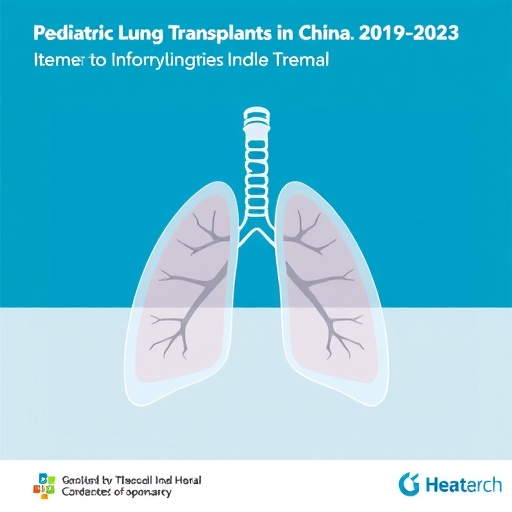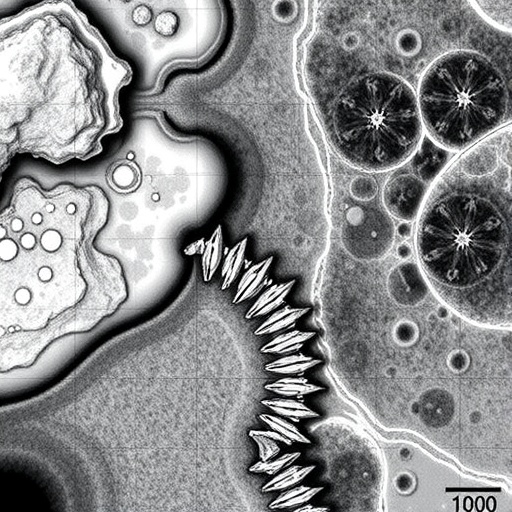In recent years, pediatric lung transplantation has emerged as a vital lifesaving intervention for children suffering from end-stage pulmonary diseases, a domain that has historically been challenged by technical complexities and limited donor availability. China, with its vast population and unique healthcare infrastructure, has witnessed a significant evolution in this demanding field between 2019 and 2023. The remarkable advancements in surgical techniques, immunosuppressive protocols, and postoperative care have culminated in improved survival rates and quality of life for pediatric recipients of lung transplants. This transformative period marks not just clinical progress but also profound shifts in organ donation policies, multidisciplinary collaboration, and innovation in pediatric transplant medicine.
Central to the progress observed is the enhancement of surgical strategies tailored specifically to pediatric anatomy and physiology, which differ markedly from adult patients. Surgeons in China have refined methods to address challenges such as donor-recipient size mismatch and vascular anastomosis in small thoracic cavities. Employing advanced imaging technologies and preoperative planning tools, transplant teams now achieve higher precision in graft positioning and vascular reconstruction. These improvements minimize intraoperative complications and optimize graft function immediately post-transplant. Such technical sophistication is vital because even minor discrepancies in anastomosis can lead to catastrophic vascular thrombosis or bronchial complications in small pediatric patients.
Another critical pillar of success has been the refinement of immunosuppressive regimens customized for children. Pediatric immune systems, more reactive and susceptible to infectious complications, necessitate a delicate balance between sufficient suppression to prevent rejection and minimizing adverse effects. Chinese transplant centers have integrated novel agents and tailored dosing protocols, often informed by pharmacogenomics, to navigate this balance effectively. The incorporation of therapeutic drug monitoring and immune function assays enhances individualized treatment, reducing episodes of acute rejection and improving long-term graft survival. These protocols also emphasize minimizing infections, which remain a leading cause of morbidity and mortality in pediatric lung transplant recipients.
.adsslot_rzCy9uqdWe{ width:728px !important; height:90px !important; }
@media (max-width:1199px) { .adsslot_rzCy9uqdWe{ width:468px !important; height:60px !important; } }
@media (max-width:767px) { .adsslot_rzCy9uqdWe{ width:320px !important; height:50px !important; } }
ADVERTISEMENT
Organ donation in China has historically faced ethical and logistical challenges, but between 2019 and 2023, significant reforms and public education campaigns have substantially increased donor rates. These developments are crucial because the scarcity of suitable pediatric donors remains a bottleneck worldwide. China’s establishment of an opt-out donor registry and the implementation of coordinated organ allocation networks have optimized the matching process. Additionally, developing living-donor lobar lung transplantation programs for pediatric cases has provided a valuable alternative to deceased-donor transplants, allowing timely intervention in critical situations. Such strategies underscore the importance of system-level policy changes alongside clinical advances.
Postoperative care protocols have evolved, incorporating multidisciplinary approaches that address the complex needs of pediatric lung transplant recipients. Respiratory therapists, nutritionists, infectious disease specialists, and psychologists collaboratively support recovery and long-term wellbeing. Early mobilization, pulmonary rehabilitation, and careful surveillance for complications such as chronic lung allograft dysfunction (CLAD) have been instrumental in extending graft longevity. Moreover, psychosocial support for both patients and families has been recognized as a cornerstone in managing the chronic nature of post-transplant life, helping children reintegrate into normal social and educational activities.
The success stories emerging from Chinese pediatric lung transplantation units are also a testament to extensive research and innovation in biomarker discovery and non-invasive monitoring techniques. Liquid biopsies, ex vivo lung perfusion (EVLP), and molecular imaging have allowed clinicians to detect rejection episodes and infections earlier than before, enabling preemptive treatment. This integration of cutting-edge diagnostics complements clinical judgment and reduces reliance on invasive procedures like transbronchial biopsies, which carry higher risks in pediatric patients. Consequently, transplant care is becoming increasingly precise, predictive, and personalized.
One cannot overlook the pivotal role of national and international collaboration throughout this period. Chinese centers have actively participated in global registries and research consortia, contributing valuable data to enhance understanding of pediatric lung transplant outcomes across diverse populations. These partnerships facilitate the exchange of best practices, promote clinical trials of novel immunosuppressants, and support the standardization of care guidelines. The resultant synergy accelerates progress beyond national boundaries, ensuring that children worldwide benefit from collective advances in transplantation science.
Technological advancements have also facilitated remarkable strides in patient monitoring and rehabilitation. Telemedicine platforms have become integral parts of postoperative care, especially in remote areas where access to specialized centers is limited. Families and local healthcare providers can communicate seamlessly with transplant teams, ensuring adherence to medication, timely recognition of symptoms, and prompt medical intervention. Furthermore, artificial intelligence and machine learning applications are beginning to assist in risk stratification, outcome prediction, and personalized care planning within pediatric lung transplantation, heralding a new era of digital precision medicine.
Despite these achievements, challenges remain. Chronic lung allograft dysfunction continues to affect a significant proportion of pediatric recipients, limiting longer-term survival. Research efforts are focusing on unraveling the immunological and fibrotic mechanisms underpinning CLAD, with the aim of developing targeted therapies. Additionally, addressing the psychosocial impacts of transplantation, including coping with lifelong immunosuppression and quality of life concerns, requires ongoing multidisciplinary attention. The emerging emphasis on patient-centered outcomes highlights a holistic approach, valuing not only survival but also daily function and well-being.
Importantly, pediatric lung transplantation in China has cultivated unique insights into population-specific considerations. Genetic diversity, prevalence of certain pulmonary diseases such as congenital cystic adenomatoid malformation, and varied socioeconomic contexts necessitate customized care frameworks. Chinese researchers have contributed valuable epidemiologic data, enhancing predictive models of disease progression and transplant candidacy criteria. These insights aid in refining timing of transplantation and optimizing allocation of scarce resources to maximize benefits for pediatric patients.
The environmental and public health backdrop also informs transplant outcomes. With increasing urbanization and environmental pollution impacting respiratory health, early identification and treatment of lung diseases in children become critical. Transplant programs are integrating preventive strategies and public health initiatives alongside clinical services to address these broader determinants of health. This comprehensive view reflects an evolving philosophy of care that transcends the operating room and engages community and policy levels.
Ethical considerations in pediatric lung transplantation are particularly poignant given the vulnerabilities of children and the lifelong implications of transplantation. Chinese institutions have developed robust ethical frameworks ensuring informed consent processes involve families comprehensively and that equitable access to transplantation services is maintained. These frameworks balance innovation and risk, fostering transparency and trust among patients, families, and healthcare providers.
Looking forward, the trajectory of pediatric lung transplantation in China is promising, with potential breakthroughs on the horizon including regenerative medicine and bioengineered lungs. Research into stem cell therapies and decellularized lung scaffolds hold the promise of overcoming donor shortages and immunological barriers. As these technologies mature, they may revolutionize transplantation paradigms, offering new hope to children with previously untreatable conditions.
In conclusion, the period from 2019 to 2023 marks a remarkable chapter in pediatric lung transplantation in China, characterized by technical innovation, policy reforms, and multidisciplinary care enhancements. These advancements collectively transform the landscape of treatment options for children with severe lung diseases, improving survival, function, and quality of life. The ongoing commitment of Chinese medical centers to research excellence, collaboration, and patient-centered care ensures that pediatric lung transplantation will continue to evolve as a beacon of hope and scientific progress in the years to come.
Subject of Research: Pediatric lung transplantation in China, developments from 2019 to 2023
Article Title: Pediatric lung transplantation in China, 2019–2023
Article References:
Li, XS., Wang, ZT., Wu, B. et al. Pediatric lung transplantation in China, 2019–2023. World J Pediatr 21, 597–612 (2025). https://doi.org/10.1007/s12519-025-00916-4
Image Credits: AI Generated
DOI: June 2025
Tags: advancements in surgical techniques for pediatric lung transplantschallenges in pediatric lung transplant surgerydonor-recipient size mismatch in lung transplantsimmunosuppressive protocols for child recipientsimpact of imaging technologies on lung transplantsimproving survival rates in pediatric lung transplantsinnovations in pediatric transplant caremultidisciplinary collaboration in pediatric transplant medicinepediatric lung transplantation trendspediatric organ donation policies in Chinapostoperative care in pediatric lung transplantsvascular anastomosis in pediatric patients





